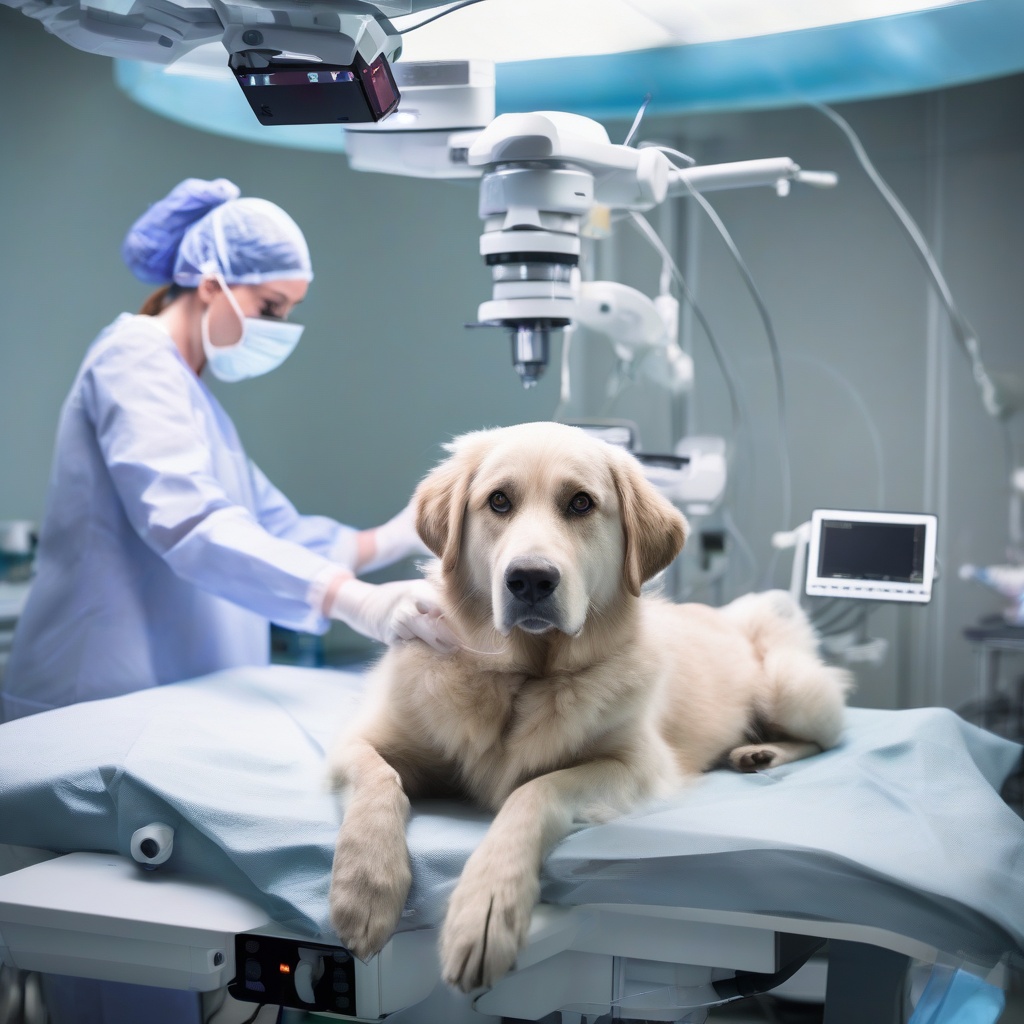Advancing Cancer Surgery in Pets with Intraoperative PS-OCT Technology and Clinical Trials Insights
Cancer is a leading cause of death in pets, with many types of tumors being difficult to detect and treat. Traditional surgical methods often rely on visual inspection and palpation, which can lead to incomplete tumor removal and recurrence. However, recent advancements in imaging technology have opened up new possibilities for improving cancer surgery outcomes in pets. In this blog post, we will explore the use of intraoperative photoacoustic spectroscopy optical coherence tomography (PS-OCT) technology in cancer surgery and share insights from our clinical trials in dogs and cats with skin tumors.
What is PS-OCT Technology?
PS-OCT is a non-invasive imaging modality that combines the benefits of optical coherence tomography (OCT) and photoacoustic spectroscopy (PAS). OCT provides high-resolution images of tissue microstructure, while PAS offers information on tissue composition and molecular structure. The integration of these two technologies enables PS-OCT to provide detailed images of tissue morphology and molecular characteristics, allowing for more accurate tumor detection and margin assessment.
Clinical Trials in Dogs and Cats with Skin Tumors
Our clinical trials in dogs and cats with skin tumors — including soft tissue sarcomas, mast cell tumors, and mammary tumors — demonstrate that PS-OCT can significantly improve cancer surgery outcomes. In these studies, PS-OCT was used to assess tumor margins and guide surgical excision. The results showed that PS-OCT was able to detect tumor tissue with high accuracy, allowing for more complete tumor removal and reducing the risk of recurrence.
Benefits of PS-OCT in Cancer Surgery
The use of PS-OCT in cancer surgery offers several benefits, including:
- Improved tumor detection and margin assessment: PS-OCT provides detailed images of tissue morphology and molecular characteristics, enabling more accurate tumor detection and margin assessment.
- Increased accuracy of surgical excision: By guiding surgical excision with PS-OCT, surgeons can remove tumors more completely and accurately, reducing the risk of recurrence.
- Reduced risk of complications: PS-OCT can help identify critical structures and nerves, reducing the risk of complications and improving surgical outcomes.
Clinical Trial Results and Insights
Our clinical trials have shown that PS-OCT can be an effective tool in cancer surgery. In one study, we used PS-OCT to assess tumor margins in dogs with soft tissue sarcomas. The results showed that PS-OCT was able to detect tumor tissue with high accuracy, and that surgical excision guided by PS-OCT resulted in more complete tumor removal and reduced recurrence rates.
In another study, we used PS-OCT to evaluate tumor margins in cats with mast cell tumors. The results demonstrated that PS-OCT was able to detect tumor tissue with high sensitivity and specificity, and that PS-OCT-guided surgical excision resulted in improved surgical outcomes.
Future Directions and Conclusion
The use of PS-OCT technology in cancer surgery has shown great promise in improving surgical outcomes in pets. Our clinical trials have demonstrated the effectiveness of PS-OCT in detecting tumor tissue and guiding surgical excision. As this technology continues to evolve, we expect to see even more significant advancements in cancer surgery.
To learn more about the use of intraoperative PS-OCT in cancer surgery, watch our webinar on intraoperative PS-OCT in cancer surgery in dogs.
In conclusion, the integration of PS-OCT technology in cancer surgery has the potential to revolutionize the way we treat cancer in pets. By providing more accurate tumor detection and margin assessment, PS-OCT can improve surgical outcomes and reduce the risk of recurrence. As research continues to advance, we look forward to seeing the impact of this technology on the lives of pets and their owners.



